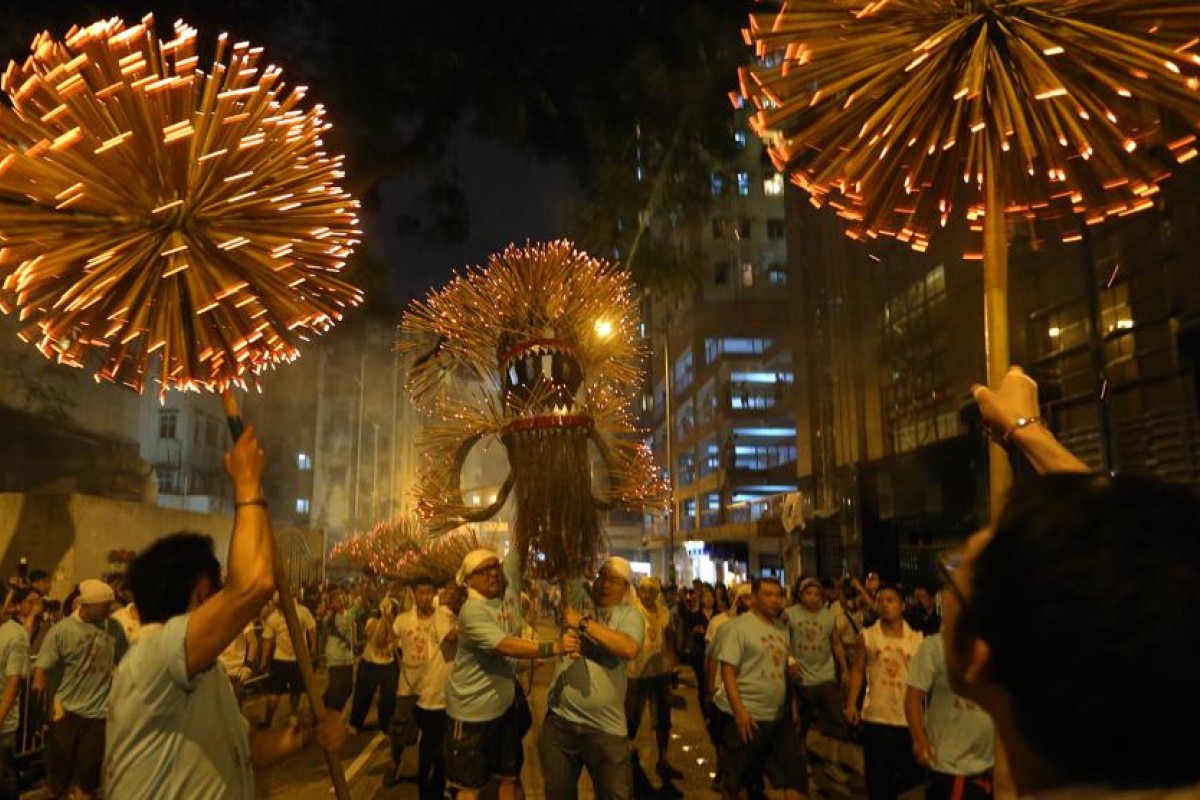
Is the gentrification of Tai Hang slowly killing off the district’s traditional way of life, or is it helping keep the area alive for the locals?

 An enthralled crowd looks on as the Fire Dragon dance winds its way through Tai Hang.
An enthralled crowd looks on as the Fire Dragon dance winds its way through Tai Hang. The Mid-Autumn Festival is nearly here! But hands off that mooncake, the festival is not just about eating yummy treats and carrying paper lanterns – it’s about being part of the thousands-strong gathering that bears witness to the famous Fire Dragon dance in Tai Hang.
Performed at the Mid Autumn Festival every year, the dance draws a huge crowd to the otherwise quiet Tai Hang to watch as 300 dragon dancers parade the dragon through the streets.
The predominantly residential district has made a name for itself as being the birthplace of the traditional Fire Dragon dance that is now a quintessential part of Hong Kong’s cultural heritage – but how has Tai Hang and its traditional values been affected by gentrification?
As part of an exhibition in Tai Hang in July, a group of Year 10 students from the nearby Chinese International School (CIS) presented their research and interviews about the traditional dance and the area.
A century ago, a bout of bad luck in Tai Hang caused utter chaos for the locals as they contended with events like a typhoon and a mysterious plague. A village elder claimed he had dreamt of a way to end their misfortune: a three day fire dance with a huge dragon. It seemed to work – the plague disappeared as quickly as it appeared, and thus began an annual tradition that continues on to this day.
The dance attracts a huge crowd every year to Tai Hang, and it’s easy to see why. The fire dragons have one distinct feature that makes them different to other dragons used in dances – they are made with grass, not wood. Gaps between the sections of trimmed grass make it easier for people to insert their lit incense sticks, of which there a total of 24,000. These sticks are individually added on the dragon’s body prior to the performance so that the dragon is wreathed in smoke and fire as it dances through the crowds and is accompanied by loud gongs and drums.
But with so many changes in the district throughout the past decade, how does the Fire Dragon dance fit in with the modern Hongkonger’s lifestyle?
The appearance of Tai Hang is no longer what it was. Where once car repair shops used to dominate, there are now restaurants that cater to international cuisine lovers.
Rachael Lee, one of the students on the CIS research team, says “I leant a lot about gentrification in Hong Kong, and how different neighbourhoods are moulding themselves to compensate for their new customers. On top of that, through asking the locals in the area, it was clear that everyone has their own opinions about change.”
The district’s gentrification, however, seem to be superficial and the residents of Tai Hang do not seem to feel as if it has changed their lives in any great measure.
“It has not affected me personally that much,” a Tai Hang store owner said. For the past 50 years, he has run a small stall that sells local produce. “I think that this area has become more populated though.”
Chan Tak Fai, the bearer and Commander in Chief of the Tai Hang Fire Dragon dance said, “There has been more people coming to watch our performance over the recent years. Approximately 10,000-20,000 people attend our ceremony annually as the festival is held throughout three days.”
As a resident of Tai Hang, Chan has been heavily involved for decades with organising the annual Fire Dragon dance – on which he believes that gentrification has not had any significant repercussions. “I think the main reason is because Tai Hang’s Fire Dragon tradition was named as an ‘Intangible Cultural Heritage’ back in 2003, when the city was starting to recover from the SARS epidemic that had hit Hong Kong. This was where it all took off, as the government wanted to attract tourists,” Chan added.
It seems, in fact, that Tai Hang’s gentrification has only helped the area, not hindered it. Despite Hong Kong’s economy being in recession, the Fire Dragon festival brings in huge crowds every year, which in turn helps the local shops and restaurants.
The number of people who have visited Tai Hang to dine at the ever-increasing amount of local restaurants has also helped spread the word about the area, ensuring that people around Hong Kong and tourists overseas do not forget about the traditional dance or the district that gave birth to it.
